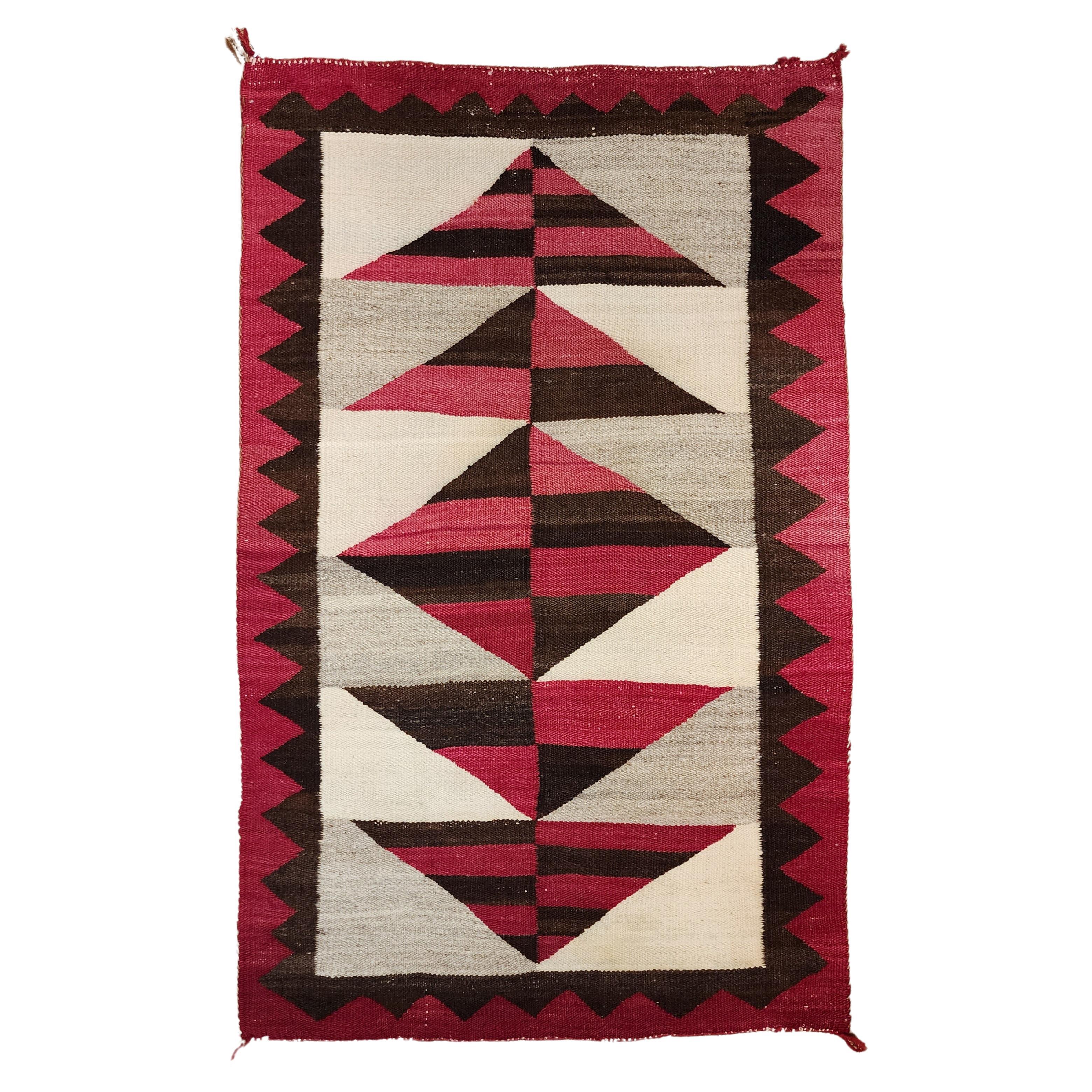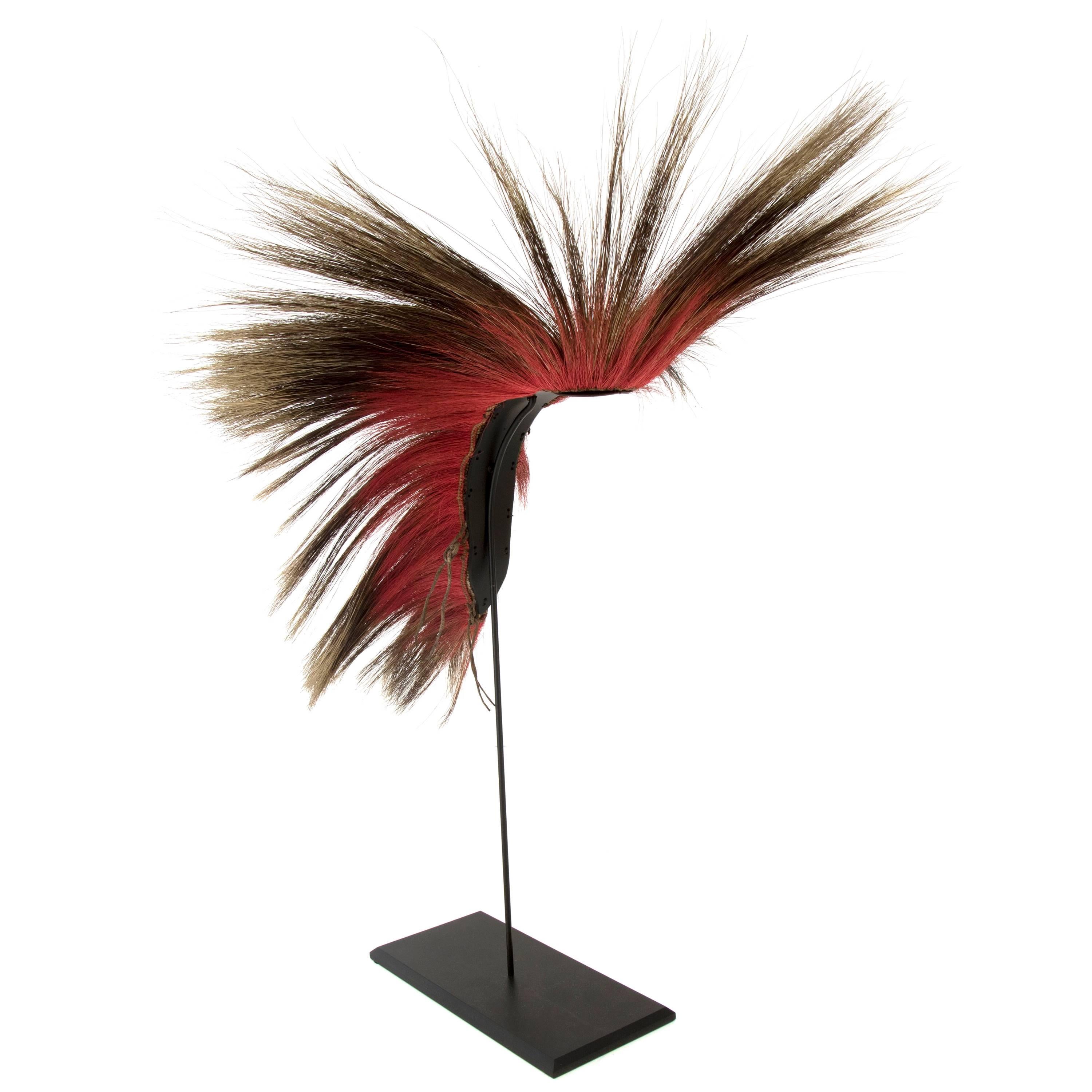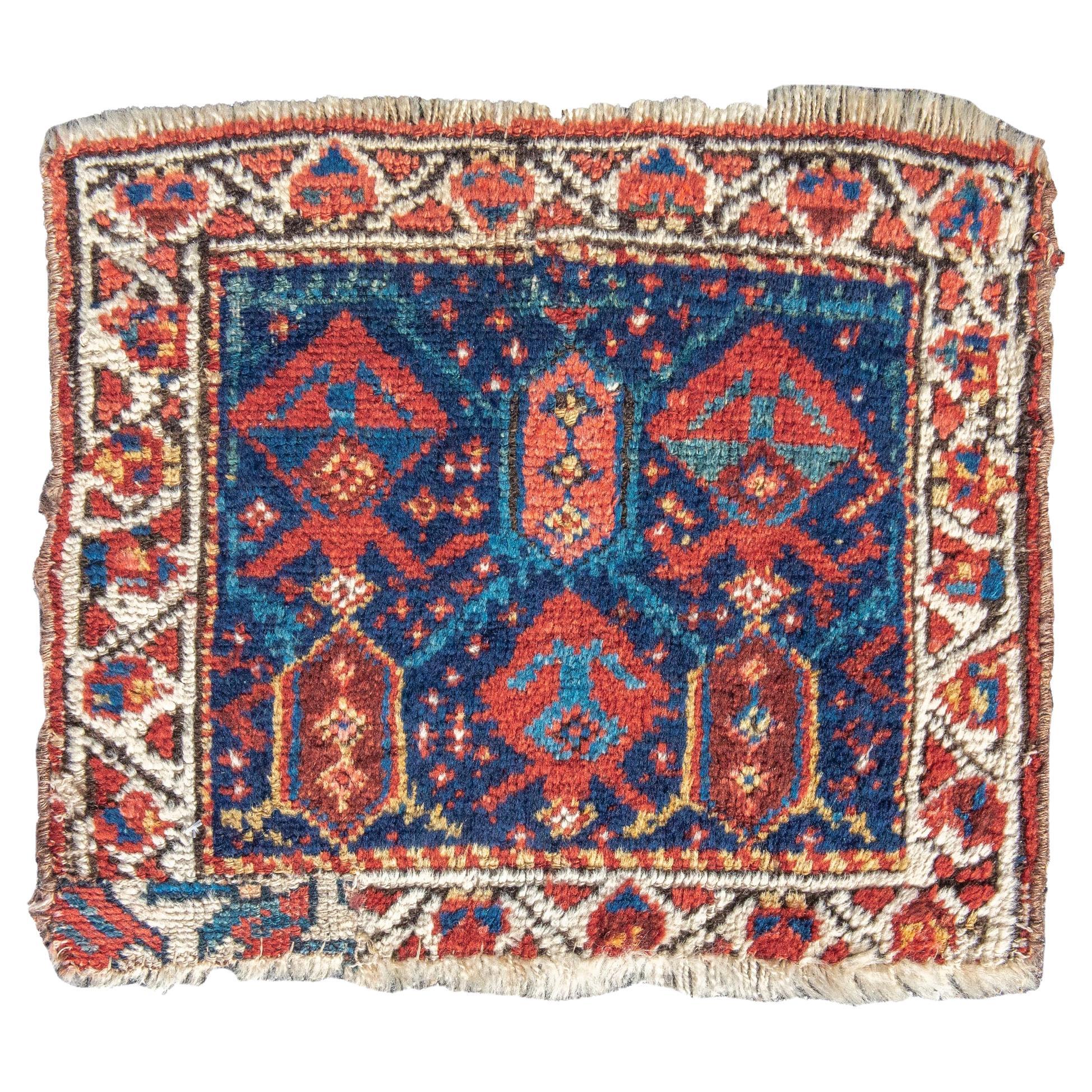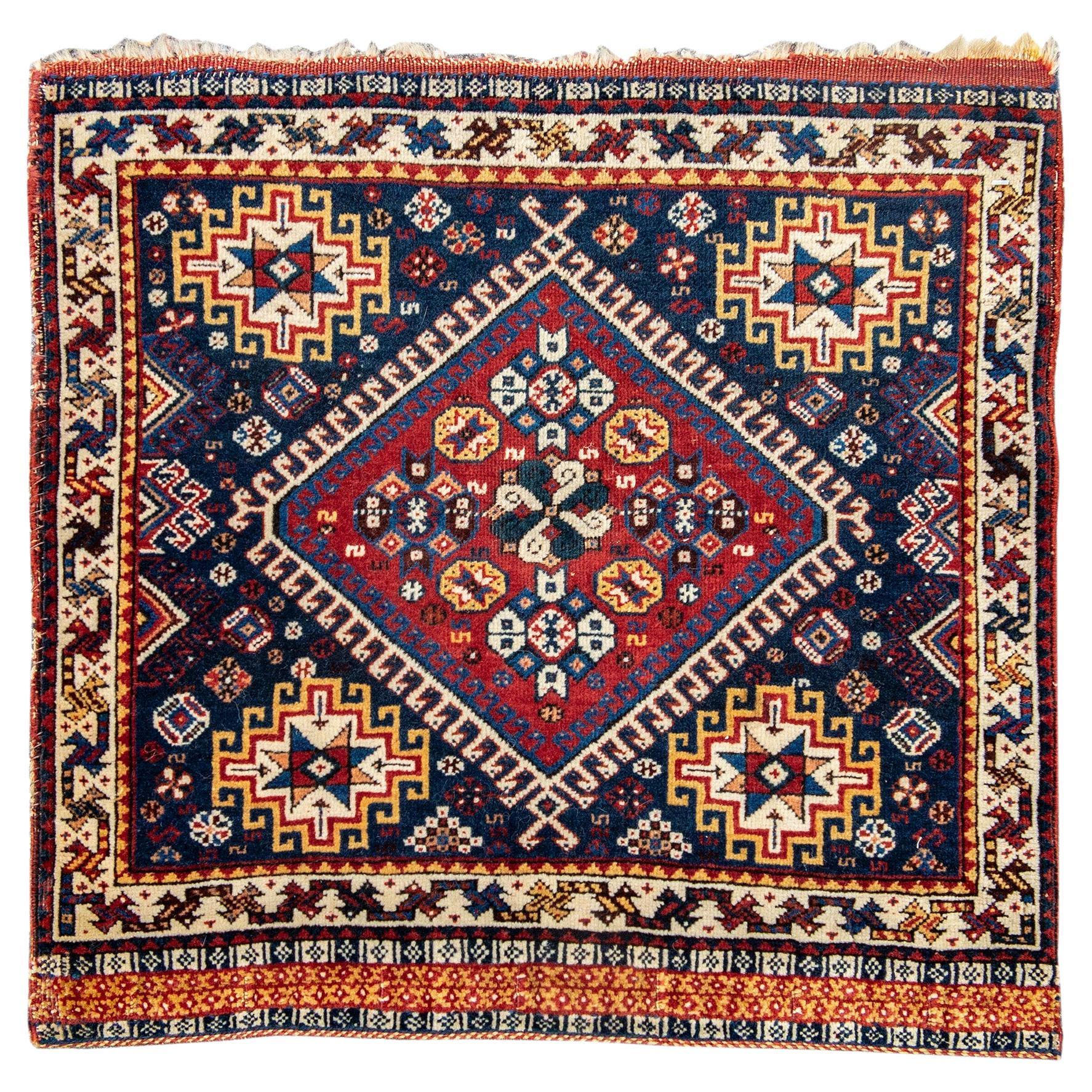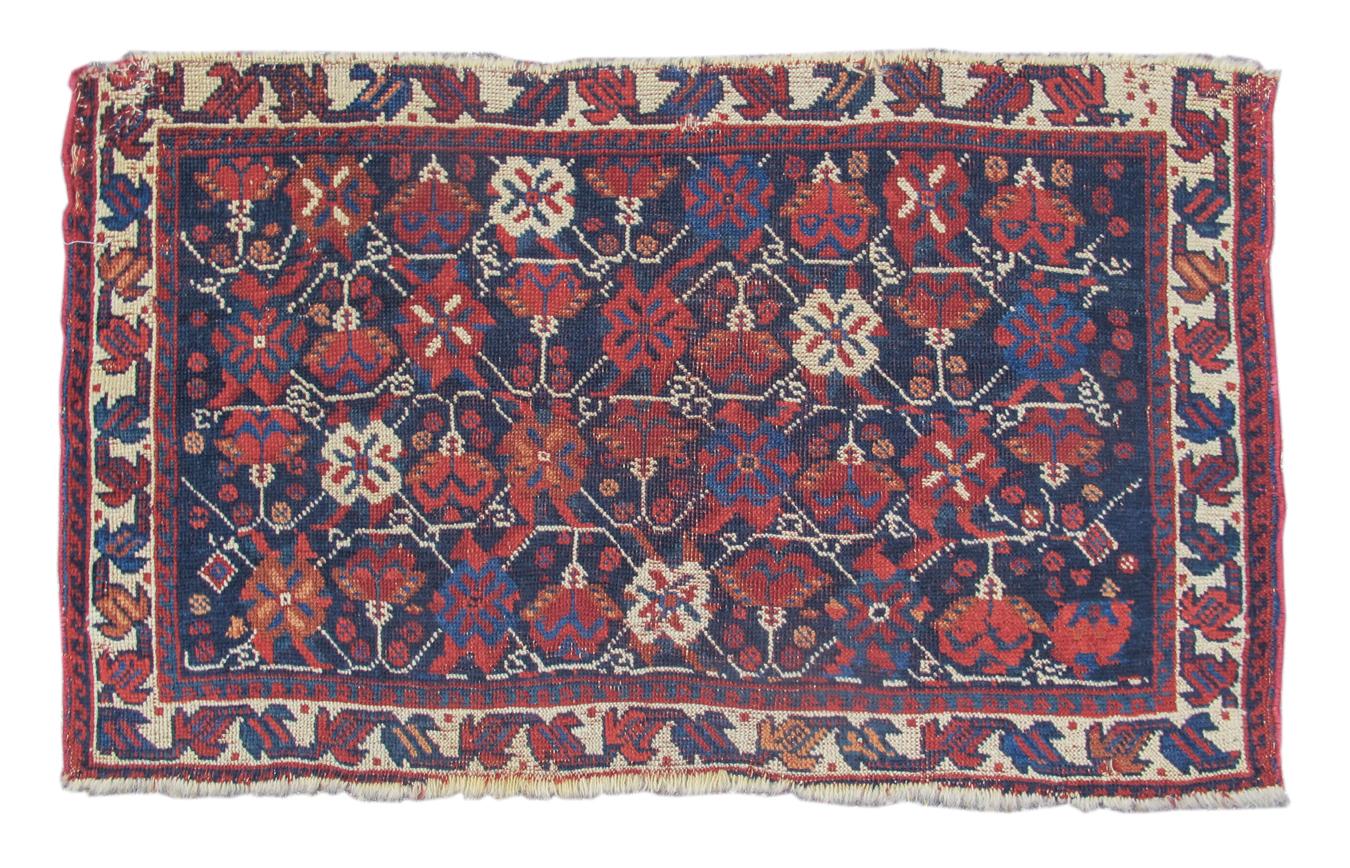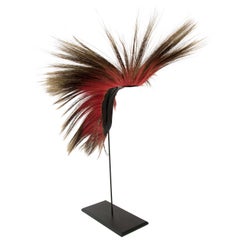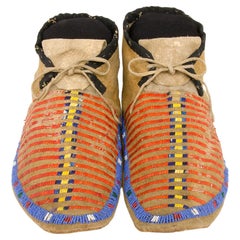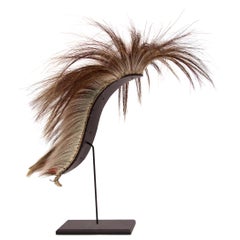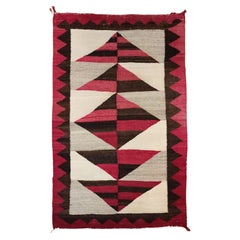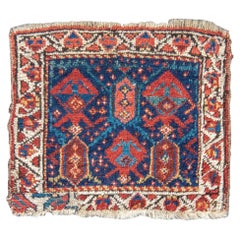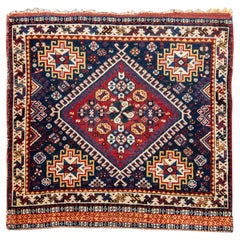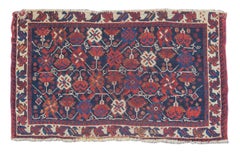Items Similar to Antique Naturally Dyed Bolivian Nanaka Tunic, Poncho, Late 19th Century
Video Loading
Want more images or videos?
Request additional images or videos from the seller
1 of 8
Antique Naturally Dyed Bolivian Nanaka Tunic, Poncho, Late 19th Century
About the Item
Ceremonial Nanaka Tunic (man's shirt) from the Toro Palca region, Potosi, Bolivia, Quechua Indian culture. Made of wool with natural dyes in the late 19th century. Presented mounted on a custom archival frame, dimensions measure 42 ½ x 74 ¾ x 1 ¼ inches.
- Dimensions:Height: 1.25 in (3.18 cm)Width: 74.75 in (189.87 cm)Depth: 41.5 in (105.41 cm)
- Materials and Techniques:Wool,Dyed
- Place of Origin:
- Period:
- Date of Manufacture:Late 19th Century
- Condition:
- Seller Location:Denver, CO
- Reference Number:Seller: 244351stDibs: LU1004623755692
About the Seller
5.0
Recognized Seller
These prestigious sellers are industry leaders and represent the highest echelon for item quality and design.
Established in 1979
1stDibs seller since 2013
144 sales on 1stDibs
Typical response time: 3 hours
- ShippingRetrieving quote...Ships From: Denver, CO
- Return PolicyA return for this item may be initiated within 7 days of delivery.
Authenticity Guarantee
In the unlikely event there’s an issue with an item’s authenticity, contact us within 1 year for a full refund. DetailsMoney-Back Guarantee
If your item is not as described, is damaged in transit, or does not arrive, contact us within 7 days for a full refund. Details24-Hour Cancellation
You have a 24-hour grace period in which to reconsider your purchase, with no questions asked.Vetted Professional Sellers
Our world-class sellers must adhere to strict standards for service and quality, maintaining the integrity of our listings.Price-Match Guarantee
If you find that a seller listed the same item for a lower price elsewhere, we’ll match it.Trusted Global Delivery
Our best-in-class carrier network provides specialized shipping options worldwide, including custom delivery.More From This Seller
View AllNative American Roach, Plains, 20th Century
Located in Denver, CO
A plains Indian roach “Headdress or Hair Ornament”. Custom display stand is included. Dimensions without stand measures 15 x 15 x 16 inches. Height with s...
Category
20th Century American Native American Native American Objects
Materials
Fur
Antique Sioux Moccasins 'Plains Indian' 1870s Buckskin, Quillwork & Beadwork
By Sioux Indian Art
Located in Denver, CO
Pair of antique Native American moccasins dating to the late Classic Period (1650-1875). Hand crafted by a Sioux, Plains Indian, arti...
Category
Antique 19th Century American Native American Native American Objects
Materials
Animal Skin, Hide, Glass, Beads
$3,800 Sale Price / set
20% Off
Plains Tobacco Bag Beaded and Quilled from Classic Period circa 1850-1880
By Native American Art
Located in Denver, CO
Plains Tobacco bag, circa 1850-1880, native tanned elk or buckskin with a quill work panel with pictorial cross elements, trade beads along the opening and ...
Category
Antique Late 19th Century American Native American Native American Objects
Materials
Hide, Beads
Roach Headdress, Antique Native American, Plains Indian, 19th Century
By Native American Art
Located in Denver, CO
Antique 19th century Native American (Plains Indian) roach headdress made with dyed deer hair and porcupine guard hair on a u-shaped braided cloth with...
Category
Antique 19th Century American Native American Native American Objects
Materials
Fur
Antique Beaded Hide Dress, Sioux Plains American Indian, 19th Century
By Sioux Indian Art
Located in Denver, CO
Antique Sioux (Plains Indian) beaded hide dress, circa 1880. This one-of-a-kind, handmade dress is crafted from Native tanned deer hide adorned with Venetian glass trade beads embel...
Category
Antique Late 19th Century American Native American Native American Objects
Materials
Hide, Beads
Native American Parfleche Box, Sioux, 19th Century Painted Hide Plains
By Sioux Indian Art
Located in Denver, CO
Antique Sioux (Native American/Plains Indian) Parfleche in a box form constructed of rawhide and intricately painted in an abstract design with hourglass and geometric motifs with natural pigments and red trade cloth.
At the time this was created, the Sioux Indians were nomadic and are associated with vast areas of the Great Plains of the United States including present-day North and South Dakota, Minnesota, Nebraska and Montana.
Authenticity is guaranteed.
Box is in very good condition - please contact us for a detailed condition report.
Parfleches are rawhide containers which were fundamental to the Plains way of life. Functioning essentially as protective travelling suitcases, they enabled the nomadic tribes to effectively pursue buffalo herds and migrate between seasonal camps. So critical were they to a nomadic existence that over 40 tribes are known to have historically produced parfleches. Collectively, these tribes inhabited an area which encompassed the entirety of the Plains, as well as the parts of the Southwest, the Transmontane and Western Plateau regions.
Parfleches were, out of necessity, robust and versatile objects. They were designed to carry and protect within them anything from medicinal bundles to seasonal clothing or food. In fact, it was because of the containers’ robusticity and variety that parfleches earned their name in the Anglo world. Derived from parer (to parry or turn aside) and fleche (arrow), the word parfleche was coined by 17th century French Canadian voyageurs and used to describe indigenous objects made from rawhide.
Despite their common utilitarian function, parfleches served as one of the major mediums through which Plains Indian tribes could develop their long-standing tradition of painting. In fact, it is in large part due to the parfleche that tribal style emerged. Even though parfleche painting developed simultaneously with beading and weaving, painting as an artistic tradition held particular importance in tribal culture. Believed to have evolved from tattooing, it had always been used as a conduit through which tribal and individual identity could be expressed. As such, many tribeswomen were deeply committed, some even religiously, to decorating their parfleche either with incised or painted motifs that were significant to them and/or the tribe. For some tribes, such as the Cheyenne, the decorative processes which surrounded parfleche production were sacred. For others, it seems that their parfleche designs shared an interesting artistic dialogue with their beadwork, indicating a more casual exchange of design motifs. This particular relationship can be seen in Crow parfleche...
Category
Antique Late 19th Century American Native American Native American Objects
Materials
Hide
You May Also Like
Antique Navajo Weaving Late 19th Century
By Navajo
Located in Hudson, NY
Circa 1890 Navajo weaving with a very elegant and modern design. Nice mottling of the natural colors, especially in the reds. This is a very bold weaving. This weaving is in good as ...
Category
Antique 1880s American Navajo Native American Objects
Materials
Wool
Antique Kurdish Bagface, Late 19th Century
Located in San Francisco, CA
Antique Kurdish Bagface Bag, Late 19th Century
Additional information:
Dimension: 1'9" L x 1'4" W
Origin: Northwest Persia
Period: Late 19th Century
Rug ID: 19592
Category
Antique Late 19th Century Persian Tribal Art
Materials
Wool
Antique Persian Qashqai Bagface, Late 19th Century
Located in San Francisco, CA
Antique Persian Qashqai Bagface, Late 19th Century
A colorful bag face with excellent color, the design is rather common. Its attributes include clarity of color and contrasting sha...
Category
Antique Late 19th Century Persian Tribal Art
Materials
Wool
Antique Persian Afshar Bagface, Late 19th Century
Located in San Francisco, CA
Antique Persian Afshar Bagface Bag, Late 19th Century
This charming Afshar bag face uses rich saturated vegetable colors and soft glossy wool, with rows of alternating flowers and b...
Category
Antique Late 19th Century Persian Tribal Art
Materials
Wool
Antique Persian Baluch Bagface, Late 19th Century
Located in San Francisco, CA
Antique Persian Baluch Bagface Rug, Late 19th Century
Additional information:
Dimension: 2'9" W x 3'0" L
Origin: Persia
Period: Late 19th Century
Condition: Good condition with a s...
Category
Antique Late 19th Century Persian Tribal Art
Materials
Wool
Antique Persian Baluch Bagface, Late 19th Century
Located in San Francisco, CA
Antique Persian Baluch Bagface Bag, Late 19th Century
Additional information:
Dimension: 2'6" W x 2'6" L
Condition: Good, minor moth damage.
Origin: Persia
Period: Late 19th Centur...
Category
Antique Late 19th Century Persian Tribal Art
Materials
Wool
Recently Viewed
View AllMore Ways To Browse
American Dimensions
19th Century American Furniture
American Antique Frames
Antique American Frames
American 19th Century Antiques
American Made Antique Furniture
American Frame Late 19th Century
Antique Shirt
Used Poncho
Native Ceremonial
Native American Ceremonial
Wool Poncho Used
Toro Antique
Antique Poncho
Native American Poncho
Antique Native America
Native American Antique
American Indian Jewellery
